Relevance of the Propaganda Model in Contemporary Society
| ✅ Paper Type: Free Essay | ✅ Subject: Sociology |
| ✅ Wordcount: 3030 words | ✅ Published: 3rd Apr 2019 |
“The Propaganda model is more relevant today than when first published”
Media is considered an integral part of daily life as we are constantly subject to being an audience to different forms of media platforms. Through market forces the media system is economically structured in such a way that it produces systemic biases, causing journalist and reporters to internalize presuppositions about the world producing ideological conformity without the need of coercion. The propaganda model attempts to explain the relationship between the so called ‘free press’ and the media elites. This essay contends to unravel the relevance of the five filters of the propaganda model and how applicable this theory it in contemporary society as opposed to when it was first introduced.
Edward Herman and Noam Chomsky’s 1988 book titled ‘Manufacturing Consent’ claimed that media behavior is driven by a variety of variables that extend from both institutional and political pressures in a profit-driven system. As a direct contrast to the liberal standpoint that suggests journalism is incompatible and adversarial to the influence of elitism and established power. The propaganda theory introduced in 1988 maintains that media content will undeniably “serves the ends of the dominant elite” (Herman & Chomsky 1994, 1). As one of the most notable books of its time, ‘Manufacturing Consent’ contested the widespread belief of the impartial nature of the media. To remove the degree of democracy, the official structure of the propaganda theory stems from the agenda setting of corporate power selling audiences to different established power. When the theory was first introduced, it was considered ludicrous to imply large media institutions including CBS news, The New York Times and Time were vessels of propaganda that “depend heavily on elite information sources” (Herman, 2003, 114). In today’s modern society mistrust, disinformation and propaganda pervades the media, where there is a strong emphasis on denouncing the myth of democratic western media.
Get Help With Your Essay
If you need assistance with writing your essay, our professional essay writing service is here to help!
Find out more about our Essay Writing Service
The propaganda
model when it was first introduced recognized patterns of media dependence
supplied by official sources, for instance media reliance on military or
government officials. Media circulated around fortifying a degree of public
support particularly in cases of war, for example the 2003 media frenzy
surrounding the false speculation of destructive arsenal in Iraq was all
politically motivated to support the rise of the freedom agenda after the 9/11
attack on America or the US invasion of Iraq. Through the use of the five
selective filters in the propaganda model: corporate ownership, the role of
advertising, the media elite, flak by established power and anti-communism as a
form of ideological control, it becomes clear that the role of the United
States media in the 19th century was more pertinent to the
implementation of the filters as opposed to today. The five filters featured in
the opening chapter of ‘Manufacturing Consent’ play a crucial role in demonstrating
the corruptive nature of the so called ‘democratic’ media system. The notable
censorship and enforcement of selective agenda setting and framing enabled
established power to control mass media outlets. The Model demonstrated how
radical, critical journalism or any ‘offensive’ media contribution can be
screened out selectively, particularly those that do not align with the
interests of the corporate power. This selective process is demonstrated
through Herman and Chomsky’s five filters of propaganda.
Corporate
ownership
The size and
concentration of media ownership to elite groups of individuals with common
interests allows for substantial amounts of media control. Mass media firms
often linked with bigger conglomerates with the ultimate end game as profit
maximization and high social status. By limiting the control of media outlets,
negative press would be filtered to ensure corporate interests. Corporate media
firms also share a common interest with other sectors of the economy, they have
a stake in maintaining an economic and political climate that Is valuable to
there profitability. Concentration of media ownership does present a filter for
what news will be selected for broadcasting, as quoted by Rupert Murdoch,
president and CEO of news corporation “when
you are the monopoly supplier you are inclined to dictate” (Mail&
Guardian,10th Jan 1997) depicts how policies and personnel at the
time reflect the owner’s conservative politics.
Today’s
relevance
The introduction
of new technologies has introduced new platforms of media distribution and
packaging. Newspapers were the single, most dominated source of media
communication during the 19th century and no longer are they run by
a single news corporation or media company.
The 21st century through the advancement of technological innovation and
communication has observed an era of cross media ownership of broadcast, print
and e-media.
Advertising
The power of advertising over forms of media, particularly radio and television acts as a primary
source of income. Advertisers do not
intervene directly but demand a supportive editorial and programming
environment. Media relies on advertising for the bulk of their revenue
therefore it is against the interests of the news media to produce content that
would antagonize advertisers. Chris Elliot, the Guardian editor claimed that
historically “60% of newspapers’ revenue
came from advertising… but during the 1990’s … revenue crept up to 70% of the
newspapers income” (Ceasefire, 2011). Media content is not the main focus
but rather a method of attracting viewers to the advertisements which is
programming’s main goal.
Today’s
relevance:
As a consequence,
to the cultivation of different media platforms there is more room for
advertising which increases the costs of producing a broadcast production,
newspaper or website. Even media accessed for free is inundated with adverts
and web banners, all testament to advertising as a source of income to
mainstream media. However, today certain media platforms eliminate the
harassment of advertisements or the option of ad-blockers is widely adopted for
those who demand continuous media consumption.
The media elite
The notion of
corporate censorship stems from the desire to curb and confine public
broadcasting. Media elites possess established ‘think tanks’ that will provide
the media with pro-corporate experts who meet conservative standards.
Throughout the 1980’s the most quoted think thank was the Heritage Foundation,
one of the most influential conservative right- winged voice. These
conservative think tanks have the financial aid to influence the news gathering
process, they include government officials and politicians typically seen as
impartial and reliable sources. The majority of the American public opinion is
evidently more liberal on economic issues then conservative ‘experts’ who
dominate the media on areas including government social policy and government
spending priority. This closed system of media censorship, manipulates
individuals to trust the expert opinion and complimentary co-independent source
as observed in the 2003 Iraq War where official claims surrounding Iraq were
presented as an official source without investigation of their reliability.
Today’s
relevance:
It has become
clear that the adoption of corporate and government approved sources have used
the advantage of being recognized as credible sources through “their status and prestige” (Herman &
Chomsky, 1998). When the propaganda
model was first introduced “the mass
media are drawn into a symbiotic relationship with powerful sources of
information by economic necessity and reciprocity of interest” (Herman
& Chomsky, 1998). Yet the high demands of the news industry particularly in
the areas of public relations journalism ‘churnalism’ can occur, where it
becomes more convenient to vaguely change the wording of a previous PR
release’s in todays society.
Flak:
When the media,
journalists, whistle blowers, sources stray away from the consensus. When the
story us inconvenient for the powers begin to discredit sources, trashing
sources and discrediting conversation. Flak acts as means of disciplining the
media and can take many forms including letters, emails, phone calls and
protests. In order to avoid the potential outcry from viewers and corporations
the media tend to avoid watered down stories that have the potential to create
flak.
Today’s
relevance
Through the
introduction of social media platform, its has become increasingly easier for
members of society to voice an opinion. Social media sites including Facebook,
twitter, Instagram and review websites have contributed to a new phenomenon of
a global audience. Politian’s such as Hilary Clinton and Donald Trump have
adopted social media sites as a way of communicating to the mass audience,
particularly during the 2016 presidential election. Now president Donald Trump
continues to use predominately twitter to address his stance on current
policies and current affairs to over 30 million followers. Consumers today,
unlike any point in time have received the most amount of value and influence
over companies. Online social media has been revised to include selections that
enable the consumer to voice a complaint or provide feedback.
Common Enemy:
To manufacture
consent, you need a common enemy. Communism, terrorism, immigrants all leads to
fear which helps corral public opinion to abide by narrow range of agenda
setting by elitist individuals and groups. Consent is being constantly
manufactured through the necessity of the media finding ways to marginalize and
control the public in a democratic society as ‘they who have put out the people
eyes reproach them of their blindness” (Milto, 1642). The agenda setting in the national press,
shape and control the information and sources that support a conservative
standpoint to embody an anti-communist ideology.
The propaganda
model’s ‘free market’ depicts a closed system of selective screening to
preserve the interests of the established power. Herman and Chomsky’s
‘Manufacturing Consent’ successfully explains the relevance of the five filters
to the United States mass media industry at the time the theory was introduced.
During the 20th century the upsurge of propaganda surrounding the
impact of WWI and WWII in part encompassed the political and cultural climate of
a highly indoctrinated society where elementary truths were easily manipulated
to sway public opinion. Towards the end of the industrial revolution, particular
communication technology such as print, radio and television became efficient
at mass producing and broadcasting for public consumption. The ideology of the
industrial revolution emanated through the ‘manufacturing’ aspects of the mass
media. Similar to assembly lines in the car manufacturing process, a single
hierarchical structure would ensure that control of the broadcasting content
would stem outwards from established elites who disseminate information. The
five filters of the propaganda model to a substantial extent are not applicable
to society today. A free press that speaks truthfully to the powerless is a
necessary pre-condition for a democratic society. The means by which
information is disseminated to the voting public in a capitalist system
presents a fundamental barrier to popular democracy.
At the time the
propaganda theory was introduced the public mind was ultimately a commodity for
economic elites to abuse. The prospect of political action by and for the
working class becomes marginalized even further when we consider how
competition between groups of major investors drives the political system that
shape the mass media in a fundamentally positive light and remove the
involvement of the public. The general population became subordinated to a
political and economic elite. Today’s technological capacities continue to
increase every day; we have removed the experience of one mass audience collecting
information from a single broadcasting network to a vast network with multiple
information channels for different audiences. The emergence of new forms of
communication media undermines the propaganda model by increasing the
availability of previously excluded groups to broadcast their opinion. The new
dynamics of media communication has obscured the conventional distinction of an
audience and a broadcaster. Through the introduction of collaboratively
produced wikis and blogs audiences are able to source their own media
information and collaborate with other members of society in the absence of
elite control.
Criticisms of the
propaganda model have highlighted structural flaws in the model itself claiming
the methodology of the model is inconsistent as “an almost conspiratorial view of the media” (Holsti & Rosenau,
n.d, 174). Despite the propaganda model
revealing the structural limitations of the elite media system as being too “mechanical and functionalist” (Hallin,
1994, 121), it can be observed as too hostile towards elites facilitating the
status quo. The model is considerably
outdated by the development of new information technology and as Lehrer asserts
“the model amounts to a Marxist
conception of right-wing false consciousness” (Lehrer, 2004, 67-8). Both
Herman and Chomsky have rejected the criticism of the propaganda model claiming
the critics charge against it “was
dismissed with a few superficial clichés without fair presentation or
subjecting it to the test of evidence” (Herman, 2003, 114). Furthermore,
they dismissed the notion of the propaganda model posing as too deterministic
and stated that any criticism of the propaganda model for its functionalist
qualities is completely dubious (Herman, 2003, 114).
In conclusion, whilst the model demonstrates how corporate elitists filter news content that is widely distributed with a set agenda challenging the notion of free press. The idea of democracy in todays society dominates the media as individuals have become more skeptical of news corporations and no longer adhere to a single source of information. Thus, the propaganda model to a substantial extent is not relevant to modern society.
References
- Ceasefire (2011). ‘A note on the Propaganda Model: Chomsky- Herman vs Herman-Chomsky’. Available at: https://mg.co.za/article/1997-01-10-keeper-of-the-global-gate [Accessed: 17th October 2017]
- Chomsky Noam, Herman, S. Edward, (1994) Manufacturing Consent: The Political Economy of the Mass Media, Vintage Book, and London.
- Hallin, Daniel (1994) We Keep America on Top of the World, New York: Routledge, pp. 121
- Herman, S. Edward, (2003) The Propaganda Model: A Retrospective Against All Reason. Available at: http://human-nature.com/reason/01/herman.html [Accessed in 14th October 2017].
- Holsti, Ole R. and James N. Rosenau (n.d.) American Leadership in World Affairs. Boston, MA: Allen and Unwin, pp. 174
- Lehrer, Eli, (2004) Chomsky and the Media: A Kept Press and a Manipulated People. Pages 67-87 In The Anti-Chomsky Ready Peter Collier and David Horowitz, editors. Encounter Books.
- Mail & Guardian (1997) “Keeper of the global gate’. Available at: https://mg.co.za/article/1997-01-10-keeper-of-the-global-gate [Accessed: 14th October 2017]
- Milton, J, (1847). The Prose works of John Milton, Harvard college library, (1), pp 92 [Online]. Available at: https://books.google.com.au/books?id=nxIWAAAAYAAJ&pg=PA149&dq=they+who+have+put+out+the+people+eyes+reproach+them+of+their+blindness&hl=en&sa=X&ved=0ahUKEwjVxbOxiYbXAhUMi7wKHVFUALkQ6AEIMzAC#v=onepage&q=they%20who%20have%20put%20out%20the%20people%20eyes%20reproach%20them%20of%20their%20blindness&f=false [Accessed: 17th October 2017]
Cite This Work
To export a reference to this article please select a referencing stye below:
Related Services
View allDMCA / Removal Request
If you are the original writer of this essay and no longer wish to have your work published on UKEssays.com then please click the following link to email our support team::
Request essay removal


